#roman forts
Text
Excellent use of old hardware.
9 notes
·
View notes
Text
Submit your reasons you're grateful to live now rather than in the past
I feel as history nerds we can sometimes pine for the past be it Regency England or Roman forts so in an effort to romanticize the present a bit and practice gratitude send me reasons you're grateful to live in the modern day and I'll post them
#history#greek history#ancient rome#roman empire#how often do you think about the roman empire#ancient history#regency#regency England#roman forts#the past#romanticize the present#romanticize your life#history nerd#roman history#historians
5 notes
·
View notes
Text
The forts would have been large enough to accommodate soldiers, horses, and/or camels. Based on the satellite imagery, some of the forts had lookout towers in the corners or sides. They would have been made of stone and mud-brick or entirely of the latter, so eventually, these non-permanent structures would have melted into the ground.
While most of the forts that Poidebard documented were probably destroyed or obscured by agriculture, land use, or other activities between the 1920s and 1960s, the team was able to find 38 of 116 of Poidebard’s forts, in addition to identifying 396 others.
0 notes
Text
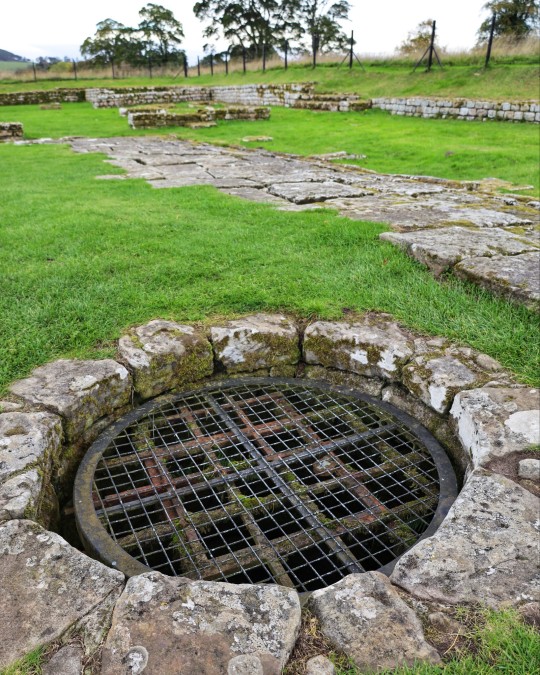
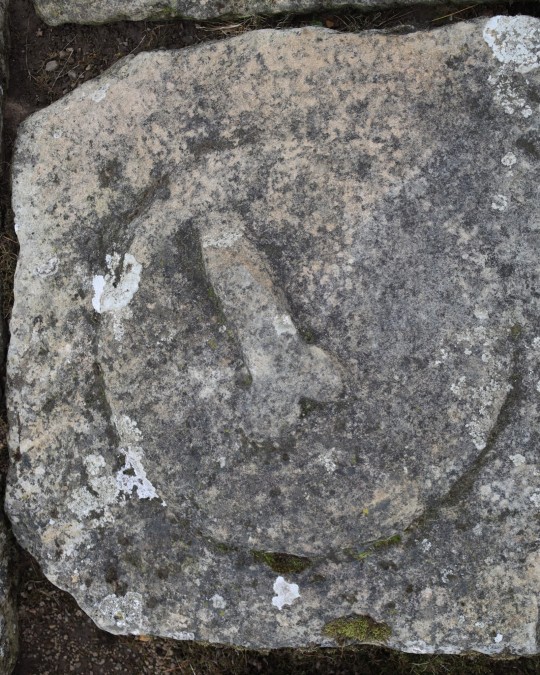

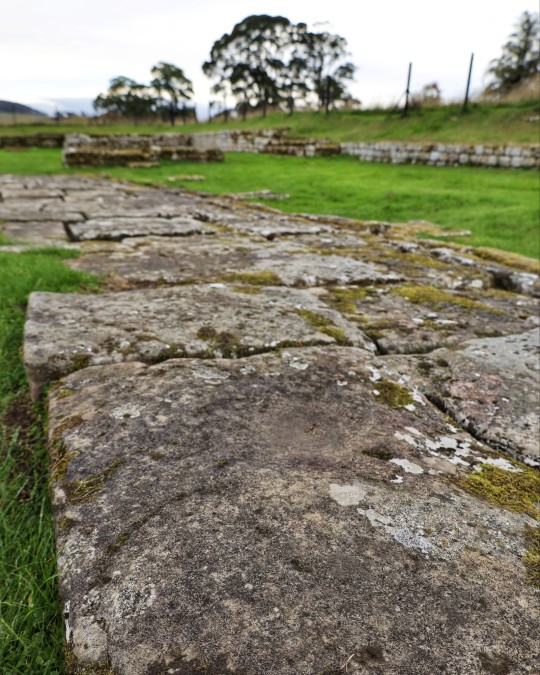
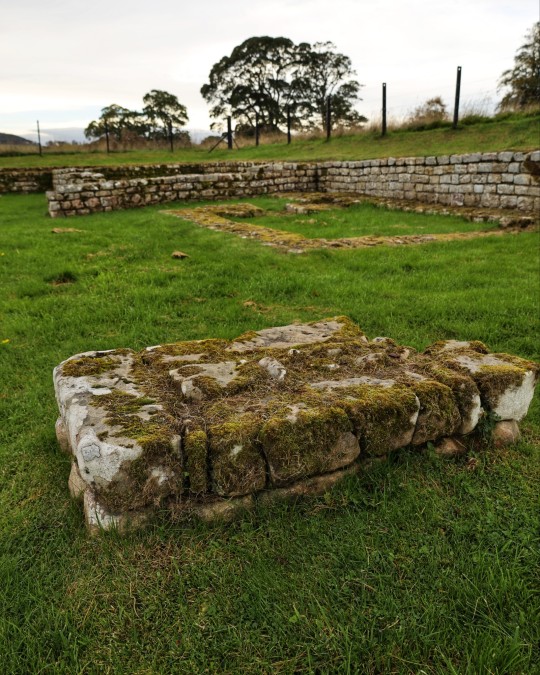
Chesters Roman Fort Headquarters Courtyard and Roman Phallus Relief, Chesters Roman Fort, Hadrian's Wall, Northumberland
#roman#roman army#roman living#roman fort#roman empire#roman building#roman symbols#romans#archaeology#chesters roman fort#landscape#stonework#relic#courtyard#roman society#ancient cultures#ancient craft
1K notes
·
View notes
Text
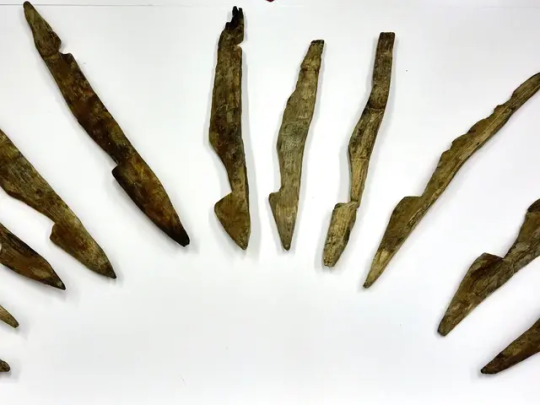
Roman Fort Defended by Wooden Stakes Discovered in Germany
For the first time, archaeologists have discovered well-preserved sharpened wooden stakes used to deter attacks from enemies at an ancient Roman military camp from the first century CE.
Researcher Frederic Auth from Frankfurt’s Goethe University discovered the spikes at an excavation site in the German town of Bad Ems.
Installations of these martial-looking wooden structures, comparable to modern barbed wire and metal bird spikes, have been referenced in literature and by Julius Caesar. But prior to Auth’s discovery, none had been found.
Experts believe the military had a presence at the site specifically because of the Romans’ investment in the lucrative precious metal mining operation there, which would need defense against sudden raids for the valuable raw material. But Goethe University archaeology professor Markus Scholz said further research is necessary to verify this theory.
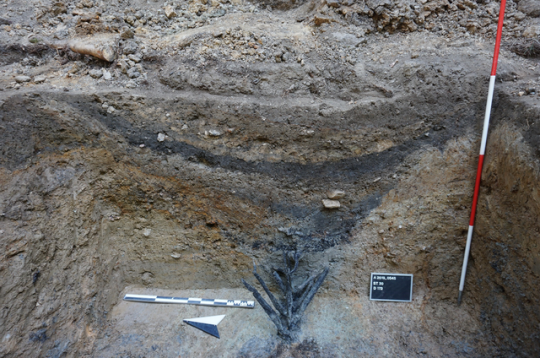
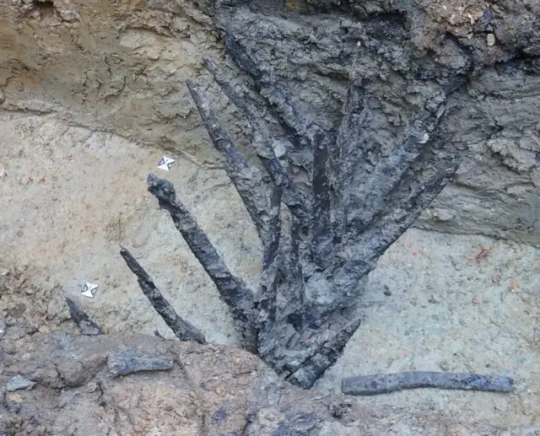

The university’s archaeology department has been overseeing a multiyear excavation project in the area focused on the Roman search for silver ore in the 1st century CE and the establishment of two military camps.
A hunter’s observations of color differences in a grain field, a sign of subsurface structures, triggered the excavations in 2016. A drone photo found a track crisscrossing the field that was actually a double ditch, framing a Roman camp. The spikes were preserved through the area’s damp soil.
According to a statement from the university, geomagnetic prospecting later revealed a 20-acre military camp with about 40 wooden towers.
Auth also led a student team to discover a smaller military camp made of wood that held approximately 40 men, located two kilometers away.
Notably, the spiked wooden defense structure was discovered on the second-last day of the team’s excavations, along with a coin minted in 43 CE. The coin was proof that the military structure could not have been built in connection with ancient Roman fortifications known as the Limes, which were built around 110 CE.
By Karen K. Ho.

#Roman Fort Defended by Wooden Stakes Discovered in Germany#Bad Ems#ancient artifacts#archeology#archeolgst#history#history news#ancient history#ancient culture#ancient civilizations#roman history#roman empire
43 notes
·
View notes
Text
What mysteries lie at the captivating Badbury Rings hill fort nestled in the heart of Dorset's picturesque countryside? From its Celtic origins to its Roman connections, this historic site transports us to another era. Owned by the influential Bankes noble family for generations, it wasn't until Sir Henry John Ralph Bankes' passing in 1982 and the subsequent transfer of the estate to the National Trust that opportunities arose for the long-awaited exploration of the site.
Excavations uncovered numerous artifacts, including pottery from the mid to late Iron Age, silver and bronze coins from the Durotriges tribe, as well as Roman coins, glass beads, and bronze jewelry. However, these findings suggest that the hill fort had a relatively short period of habitation. The emergence of the nearby Romano-British settlement, Vindocladia, led to the gradual abandonment of Badbury Rings, allowing it to succumb to the passage of time.
The allure of Badbury Rings still persists, where history whispers through the windswept fields of Shapwick, revealing the resilience of ancient Britain against the tides of time.
22 notes
·
View notes
Text
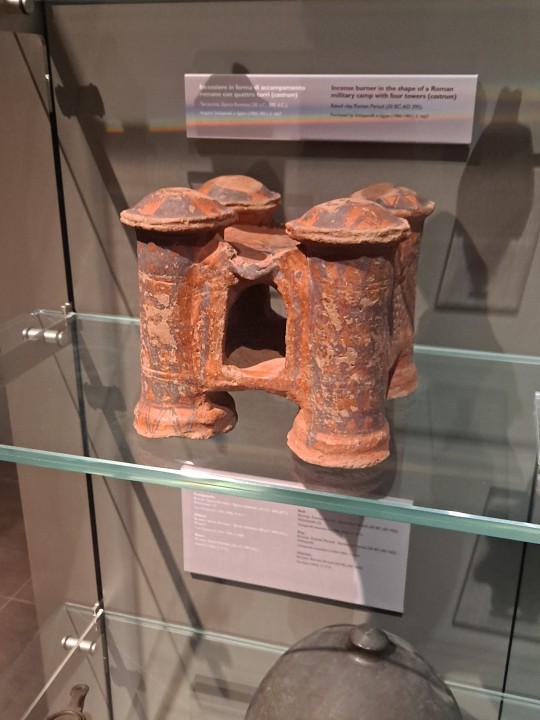
Insence burner in the shape of a Roman military camp
* Roman Egypt
* 30 BCE -395 CE
* Egyptian Museum, Turin
Turin, June 2023
115 notes
·
View notes
Text
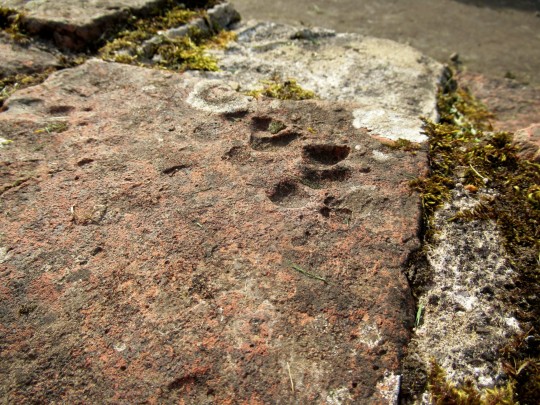
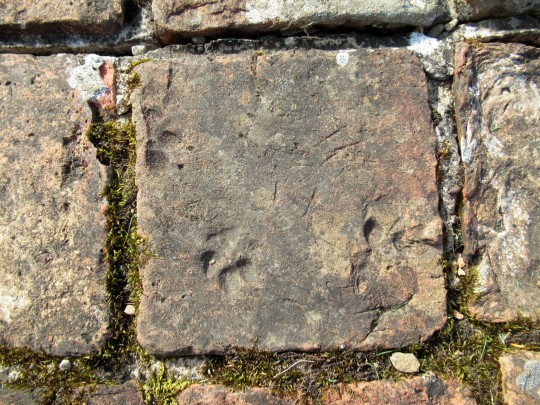
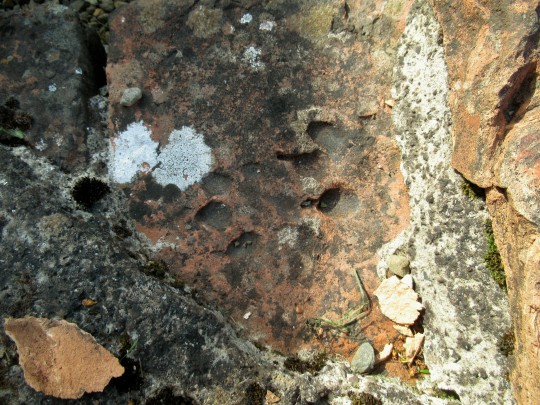

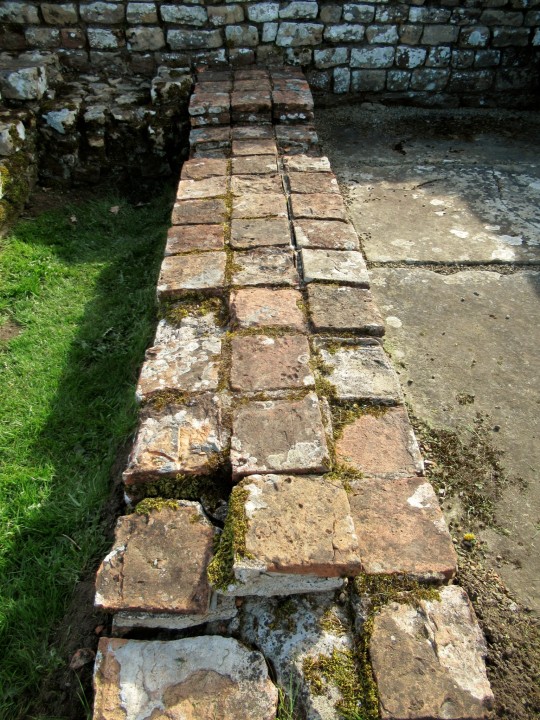

Another highlight from the Hadrian's Wall adventure -- we stopped to enjoy Cilurnum/Chesters Roman fort and spotted the feet of ancient dogs recorded for posterity. They're in terra cotta tiles that were used to build a kind of makeshift bathhouse in the dying days of the fort, after getting to the original bathhouse became too dangerous for reasons that are unclear (according to our guide). Look at all those tiles propping up that shambly hypocaust! We'll never know how many dog toes are lost to history in those stacks.
#Cilurnum#Cilurnum is a Roman cavalry fort built near Hadrian's Wall#near the time the wall was built so sometime in the late 120s AD#the tour is something I would normally skip#BUT#since it was late on a Tuesday afternoon in the off season there was virtually no one at the site and#as a result we had the tour all to ourselves & it was fantastic#just like my beloved National Musuem tours#<3 a private historical tour
12 notes
·
View notes
Text
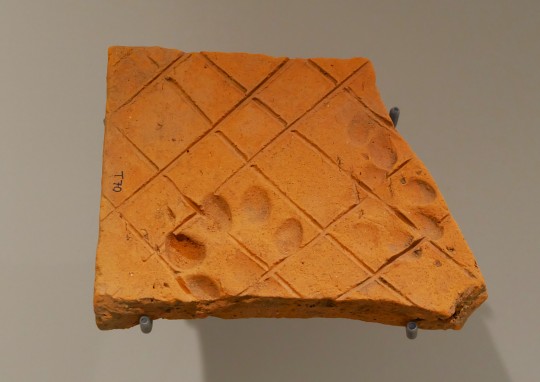
Bath House Tile from Hexham, England dated to the 1st Century CE on display at the Roman Vindolanda Fort and Museum in Hexham, England
Large quantities of tile were discovered during the excavation of the Vindolanda pre-Hadrianic bath house, The tiles were probably manufactured on site ar Vindolanda. When they were laid out to dry numerous small animals walked over the damp clay, leaving footprints. Over 300 animal prints have been identified, representing cat, pig, cattle and sheep or goat.
Other impressions on the tiles include human finger prints, textile prints (where the tile carrier has pressed the tile against their rough apron or tunic) and grafitti.
Photographs taken by myself 2022
#art#archaeology#1st century#ancient#roman empire#england#english#history#roman vindolanda fort and museum#hexham#barbucomedie
165 notes
·
View notes
Text
It's very late middle ages / age of Christianity for me and the fandom (the show but tbh they took the christian/norman influences to the MAX so) to assume women held few roles of power/authority/influence
I mean I don't have a history degree and I don't know a lot but I know boudica was a badass warrior lady who led armies against the Romans only ~500 years before King Arthur could have lived. And if the native people (or the Welsh natives specifically who managed to mostly avoid roman subjugation to my knowledge) were to continue any types of traditions or ways of life id assume it would be that women could be druidesses/priestesses, possibly even warriors and certainly queens.
Anyway morgana being only the king's ward, "powerless" in her own castle/home, and not even allowed a chance at a throne that is her birthright, kind of doesn't make sense?
Like if Uther was trying to be sneaky and marry the half siblings to each other to solve the succession issue I guess that makes sense?? Especially having her spend so much time in the castle. But they make Morgana's swordfighting skills this novel thing, mentioned only really a few times in the whole show, mostly in season one it feels like. If she was raised with a blade as the daughter of a knight she could/should be a knight too, just like Arthur. She could be his official second in command, since her known status is lower than his, but yet higher than sat Leon's because her father was such an important knight.
#oh this is just me rambling i guess#morgana pendragon#bbc merlin#idk it makes more sense for arthur/merlin to be happening in the 6th century than after the norman invasion like seriously?#they fit into the ancient world not the middle ages#a time of roman roads and much smaller fort type castles not grand french palaces
18 notes
·
View notes
Text

sure why not
#agfdkdmgh how did this happen#roman politics is not my forte but isn't like censor or someone supposed to prevent this#anyways good for him#thoughts
32 notes
·
View notes
Text
https://www.archaeology.org/news/12356-240430-germany-snake-deity
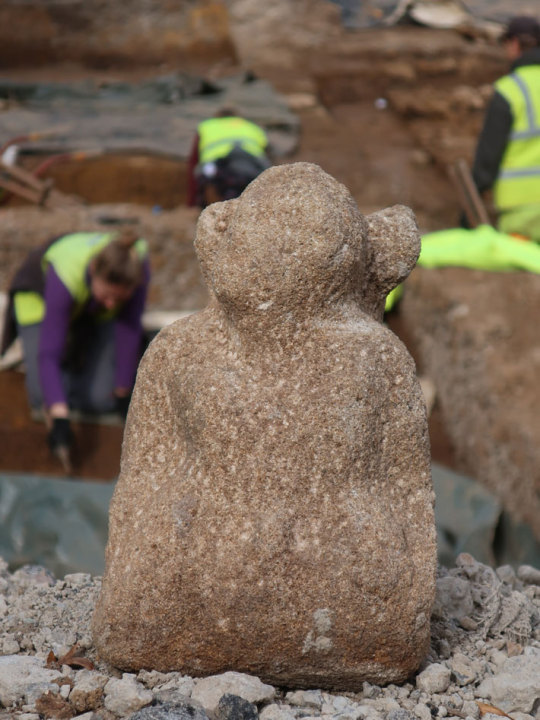
I'm just going to take their word for it that this represents a snake deity. I'm sure they're right, but it just looks like a monkey to me.
8 notes
·
View notes
Text

Bridget Atkinson (1732-1814) shell collection
cred: english-heritage.org.uk
3 notes
·
View notes
Text
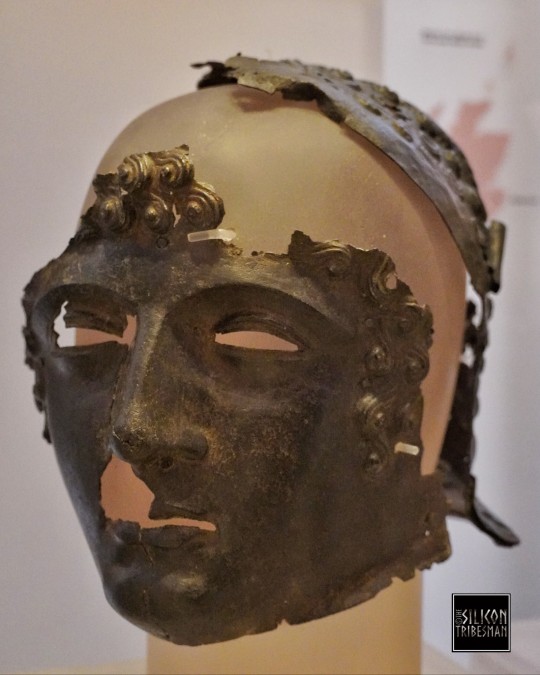

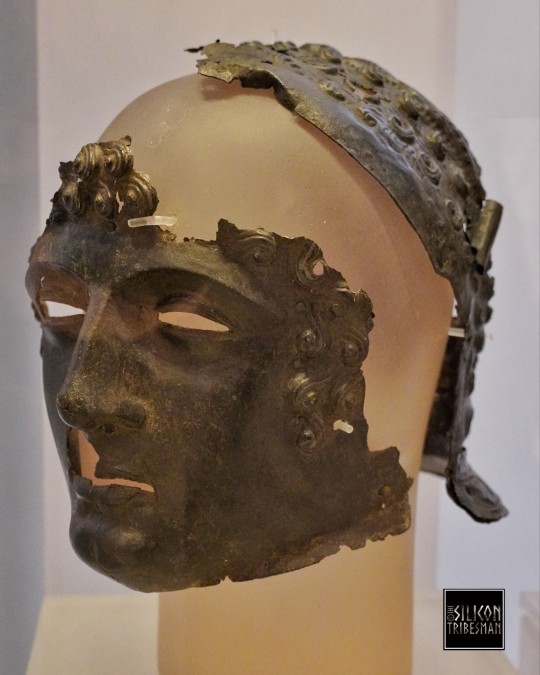
Roman Military Ceremonial Mask and Helmet, The National Museum of Scotland, Edinburgh
#roman#roman living#roman army#roman empire#roman soldiers#roman fort#roman cavalry#Edinburgh#archaeology#relic#metalwork#metalworking#helmet#mask#status#Scotland
315 notes
·
View notes
Text
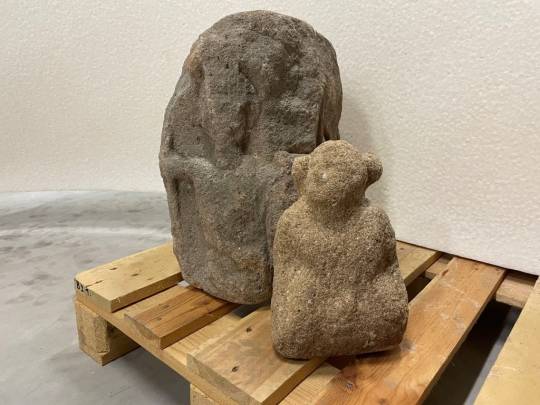
Stone Sculpture of a Roman ‘Giant’ Unearthed at Ancient Fort in Germany
The new find completes another artifact unearthed more than a century ago.
Due diligence in Stuttgart recently unearthed a stone sculpture that was actually part of an ancient Roman monument discovered at the same site more than a century ago. For the past few months, the State Office for Monument Preservation (LAD) has overseen excavations at a plot that had been tapped for the expansion of a local school. From 100 to 150 C.E., this very location hosted an ancient Roman fort, which became a larger settlement 100 years later. Those preliminary excavations paused, a release said, when an employee from the contractor ArchaeoBW spotted “a rather inconspicuous, mud-smeared sandstone.”
“The find turned out to be a 30 centimeter-tall kneeling figure with a human head,” the release says. “You can see how her arms rest on the sides of her upper body and her hands rest on her hips and legs.” It may take some imagination to fully grasp, but the chimera’s lower half shifts from a human torso to a serpent’s tail.
Fortunately, experts have ample historical context to understand the find. “The figure is a hybrid creature of the Roman-Germanic world of gods, a so-called ‘giant,’” said senior LAD archaeologist Andrea Thiel. Comparative analyses found that this figure hails from a larger Jupiter column—a type of religious monument that was particularly prevalent throughout Roman Germania during the 2nd and 3rd centuries.
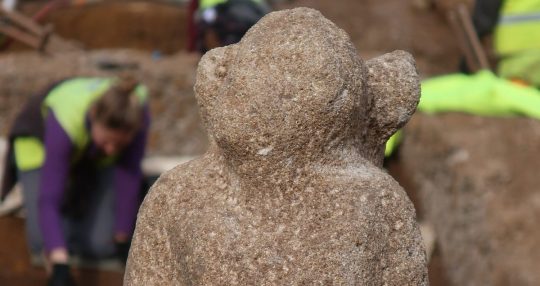
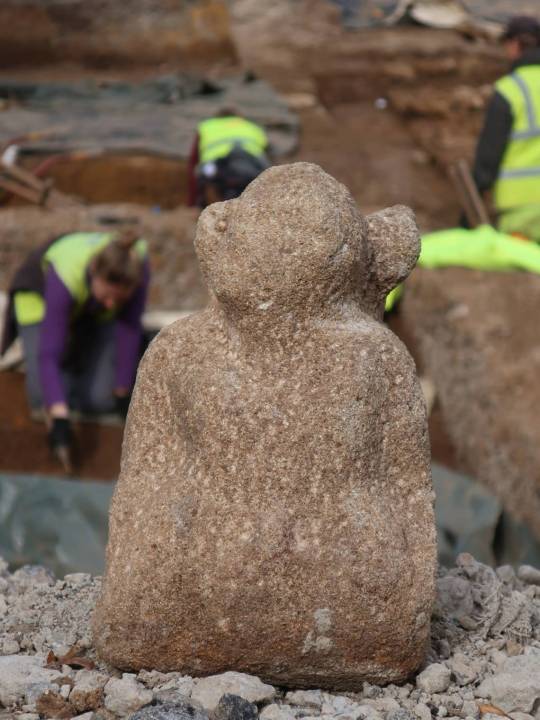
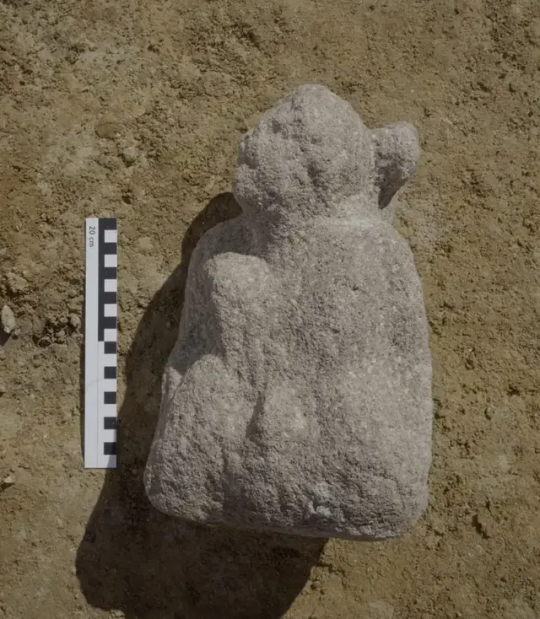
Jupiter columns “combine classical antiquity with probably Germanic beliefs,” Thiel explained. “Jupiter, throwing lightning bolts, rides on his horse over a figure crouching on the ground, usually naked and bearded, as can be seen, for example, in a group from Hausen an der Zaber in the Heilbronn district.” This specific example presented Jupiter as nature’s master, Thiel added.
“Every archaeologist is happy when a beautiful find is made,” he said. But, when the staff at the nearby Württemberg State Museum caught wind of the discovery, they remembered that most Jupiter columns included a Four Gods Stone at their base. “In the depot of the Württemberg State Museum there is a badly damaged Four Gods Stone with depictions of the Roman deities Mercury, Juno, Hercules and Minerva,” said the museum’s head of archaeology, Astrid Fendt. Mercury, Juno, and Minerva formed the Capitoline Triad of Gods. Although Juno wasn’t a fan of Hercules, the Hapsburg family did consider him a legitimate ancestor.
The museum’s Four Gods Stone surfaced in 1908 near a well on the edge of the same lot being excavated. “At the time, a large barracks was being built,” representatives for the city said. The find instigated a more exhaustive excavation. Thiel said that the figure they just found “could also have been lying there, but it probably escaped our colleagues at the time, which is not surprising.”
Crews will continue scouring the site for further artifacts through the end of May. “By then, the entire construction window will have been examined and all finds will have been recovered,” the city said. “We hope that it will soon be possible to show the little giant together with the relief of the gods in a special exhibition.”
By Vittoria Benzine.
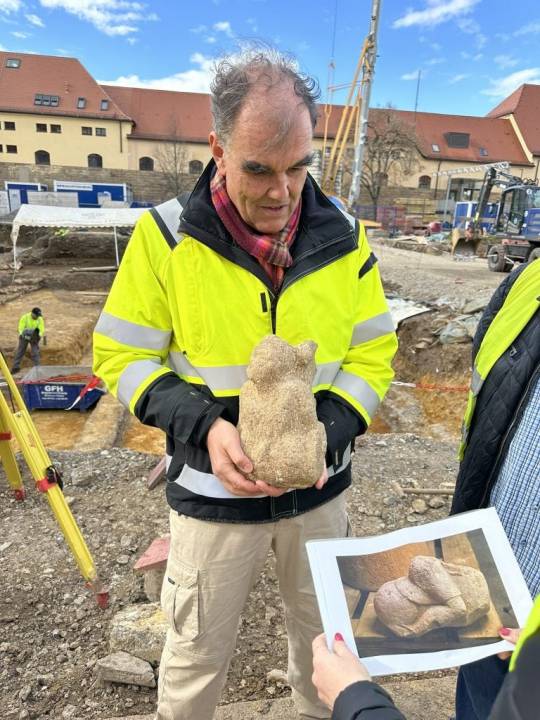
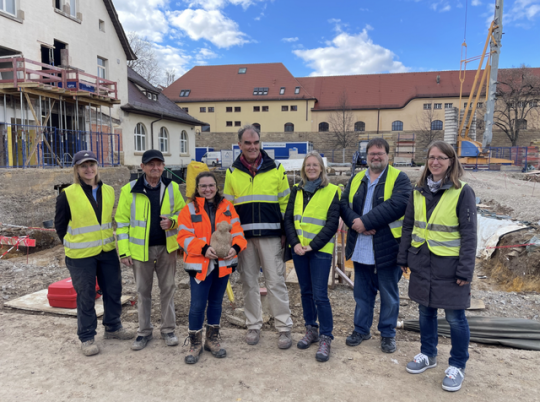

#Stone Sculpture of a Roman ‘Giant’ Unearthed at Ancient Fort in Germany#Stuttgart Germany#stone statue#ancient artifacts#archeology#archeolgst#history#history news#ancient history#ancient culture#ancient civilizations#roman history#roman empire#roman art
24 notes
·
View notes
Text
Hundreds of Roman forts have been discovered in Iraq and Syria by examining imagery released from 60s and 70s spy planes, prompting a re-evaluation of life on the Roman frontier.
34 notes
·
View notes